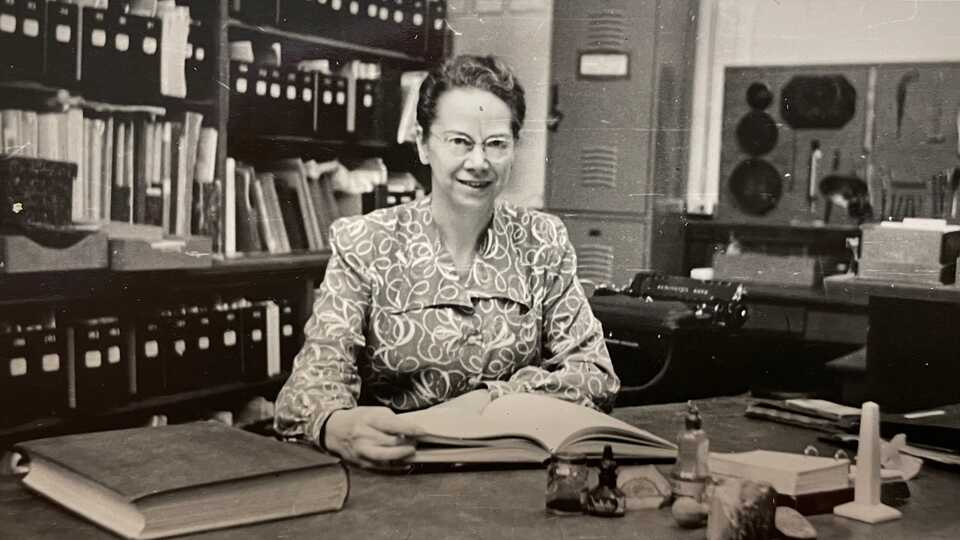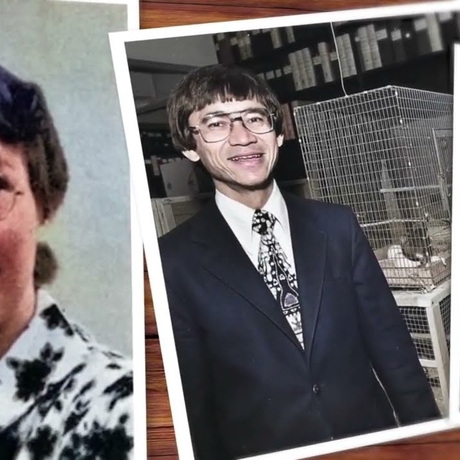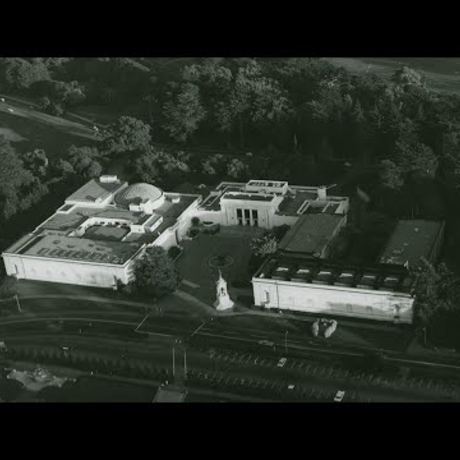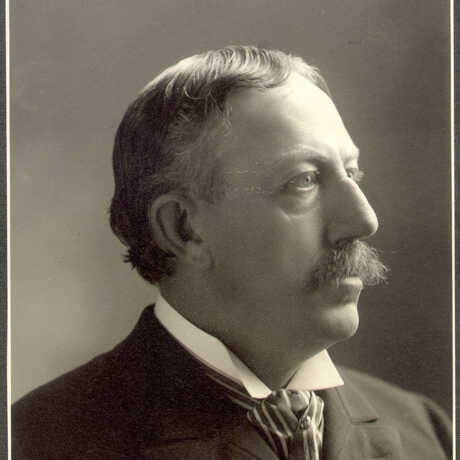Founded in 1853, the Academy Library is a research library devoted to natural history and the natural sciences. Explore our extensive collections, including rare books, serials, maps, and photography.
Untold Stories
A. Myra Keen

Early Life
Angeline Myra Keen was born on May 23rd, 1905 to Ernest Byron and Mary Thurston Keen in Colorado Springs, Colorado. She grew up on a cattle ranch approximately 20 miles outside Colorado Springs, near the town of Littel. She completed grammar school in five years due to her school being small and allowing her to skip grades easily. Keen’s parents realized how gifted she was in academics so they decided to move to Colorado Springs in the hopes of her receiving a better high school education. Keen graduated in 1923, and most of her high school life centered around biology. After high school however, she moved back to the country with her parents and spent three years photographing nature all around her. It was said that she was “wading up and down creeks photographing all the wild life that would stand still.” During this time she aspired to write articles on nature, but found little commercial success. Because of this, her family decided to move back to the city so Keen could attend Colorado College and broaden her education once more.
Educational Background
At one point, Keen wanted to become a concert pianist. Instead, Keen attended Colorado College aided by a scholarship, and wanted to become a naturalist or an entomologist. But, her hatred for dissections and chemical smells prevented her from doing so. Eventually she and her mom decide to move to Stanford, while her father stayed in Colorado to earn the money they needed by chicken farming. She graduated Phi Beta Kappa from Colorado College in 1930.
Keen enrolled at Stanford on a scholarship, and in 1931 she earned her MA in Psychology. In 1934 she obtained a doctorate in Psychology from UC Berkeley. There, she worked part time as a student assistant at the Child Welfare Institute. This experience shaped Keen, especially in regards to her views on government assistance. Later on, due to the Great Depression, Keen could not find work, so she found herself at Stanford as a volunteer for the Geology Department.
Time at Stanford
While Keen was a doctoral student at Berkeley, she discovered her passion for shells in a small bookshop. She collected shells to study in Monterey on a field trip, pursuing her newly found passion in malacology. She moved to Monterey in the summer and collected shells because there were no job prospects and the cost of living was cheaper than Berkeley. During her time there, she began her contacts with Stanford’s Hopkins Marine Station, leading her to meeting Ida Oldroyd, the Curator of Geology at Stanford. In 1934, Myra Keen began volunteering under Oldroyd. Keen would aid Oldroyd in identifying various species of mollusk and rearranging them and even made an index for them, which Oldroyd wasn’t enthusiastic about.
Three years later, she was given a paid part time job as the Curator of Paleontology. After 18 years as curator and lecturer, she became an Assistant Professor in 1954, Associate Professor in 1960, and a full Professor in 1965 at age 60. Keen was one of only three female science professors at the time, and the first women to teach in the Earth Sciences department at Stanford.
Before World War II, she gained valuable experience while working as an apprentice under Hubert Gregory Schenck. With him, her knowledge on molluscan fossils found on coastal mountains in California expanded. Additionally, with her proficiency in statistical analysis, she was able to efficiently process large amounts of data and identify patterns of distribution. During World War II, there was a shortage of men in the Paleontology department so Myra was requested to help the department teach elementary Paleontology. When Schenck came back from WWII, he immediately got back to work, making Keen audit his stratigraphy and paleontology courses, study under him, and do other tasks–this eventually led to her appointment as a Curator in Geology. Initially, this was a position which had no salary, but once the Great Depression started slowly improving, she received a small stipend. Soon after, she began to teach historical geology and paleontology even though she wasn’t on the teaching faculty until 1954. Before that, she was essentially teaching without being officially recognized as a professor. She worked full time but received only half time pay, and couldn’t even sign the class lists since she didn’t have a formal professorial appointment. This sort of misogyny followed women, including Keen, into their professional and educational careers; there was an incident in 1930 where Keen, a student at the time, was verbally abused for walking down the Law Department’s stairs on accident, which was known as off limits for female students. She was the chairman of The Women of the Faculty Club at Stanford from 1958-1960, a direct response to the exclusive Men's Faculty Club.
Keen's Students and Career Highlights
Keen was greatly admired among her students, one even went as far to say, “What many will remember about Dr. Keen is that she was highly skilled at making people feel appreciated. She was a master at it. To her, every person was to be treated with the greatest respect and patience. She gave individual attention to each person with whom she had contact-both in person and in her thorough, carefully phrased letters. Her valuable criticisms and suggestions often had to be searched for between the lines of understated conversation and text.” Keen had an impact so deep that many of her devoted students went on to become professional scientists, curators, and heads of departments of malacology. Her students were successful thanks to Keen’s determination to educate them: “Two graduate students working under Dr. Keen’s guidance, are doing research on a collaborative project which is being conducted in all English-speaking countries to revise all invertebrate fossil groups” “Another student has used shell data to solve problems in paleontology and stratigraphy in determining glacial history of a portion of British Columbia.”
She curated an exhibit entirely on correspondences she had with fans and people who just simply shared the same fascination with shells as she did. During her time at Stanford, Keen published fourteen books (including reprints) and about 75 academic journal articles. She became known as the “First Lady of Malacology,” being written to by numerous researchers and professors to identify certain species of mollusks, which she did with great accuracy and detail. In 1975, Japanese Emperor Hirohito met with Keen during his visit to the United States. Keen was one of the few people to visit him while he came to visit. They mutually bonded over their love, passion, and curiosity for mollusks and corals. They shared their research, and he even gifted her two personal gifts.
During her career, she said that one of her experiences she was most proud of was when she was invited to attend a colloquium of all the zoologists of the world (held in London) in 1958. In addition to this accomplishment, she was the first woman to receive the Fellows Medal of the California Academy of Sciences in 1979. This award is a “lifetime honor in recognition of diverse accomplishments, including, research, leadership, teaching, mentoring, fostering collaborations, and advancing public understanding of science.” She was also a Fellow of the Geological Society of America and the Paleontological Society and additionally served as president of the American Malacological Union (1948) and the Western Society of Malacologists (1970). Moreover, she played an integral role as the long-time chairman of the Committee on Nomenclature of the Society of Systematic Zoology, and she received the Award of Honor of the American Malacological Union (1948) and a Guggenheim Fellowship (1964-65).
Keen's Values
Keen was an extremely passionate human being and held very strong beliefs about a variety of things, not just mollusks! This was seen across all aspects of her life, like how she mentions her passion in gardening and even grew vegetables for herself to eat. Politically speaking, she had a variety of opinions and was quite progressive in comparison to her peers.
Keen was a devoted feminist who strived for equal pay for female faculty. At one point, she wrote a section on how the beauty standards of women are illogical and unfair in comparison to men's beauty standards. Keen was also an anti-war advocate, supported the preservation of our natural world (especially coastal ecosystems which mollusks were prevalent in), and believed in peace across humanity. Not only that, but she also acknowledged the hardships Indigenous people had to go through, was very against how the government treated them, and was extremely aware of their efforts to preserve their history and culture. Additionally, Keen was a Biblical scholar, and active participant in the Religious Society of Friends. She adhered to Quaker rules of no self-indulgence and living a life of practicality and frugality, which included never drinking alcohol and prohibiting smoking in her home, office, and top floor of the Geology department. Personality wise, Keen was a person loved by many. She was gracious, lending out a lot of her stuff, and enjoyed making jokes with her good sense of humor. Her open and warm attitude is why so many of her students respected her so strongly, and why she was very close to many of her former students. At one point she even stated, “I have more contacts with my former students than former colleagues!” Overall, Keen had strong opinions and left deep and positive impressions on all who she met.
Retirement and Life After Stanford
After Stanford, Keen was still present in many of her student’s lives. Keen’s love for shells did not just remain within the confines of Stanford, as her career centered around them. She enjoyed contributing to the research of mollusks greatly, however due to health reasons Keen was forced into retirement. Near the end of her career, Keen began developing a lot of health issues, such as cataracts in her right eye and arthritis. She also at one point suffered injuries such as a broken wrist, and needed a hip replacement. Additionally, in 1983 Keen was admitted to the hospital for liver cancer, but refused chemotherapy because she wanted to keep working. However, her health caught up to her, and even though she wanted to keep working she simply could not. After more than 50 years, her career ended, as Keen decided to retire and leave the peninsula for a community home in Santa Rosa. She was not particularly enthusiastic about this, but decided it was necessary for her health. But even with Keen’s retirement, she still continued to contribute to the scientific community as many of her documents like reprints and personal archives were given to the CAS Library and the Smithsonian. Additionally, her collection of fossils and recent mollusks she curated were transferred to CAS. Keen passed away at age 80 in 1986, but her legacy as a curator and scientist continues to live on.
References
Angeline Myra Keen. (n.d.). Historical Society. https://historicalsociety.stanford.edu/angeline-myra-keen
Biographies. (n.d.). https://web.archive.org/web/20161220151400/http://calcentral.com/~fossils/peopleb.html
Fagen, A. (2023, February 3). California Academy of Sciences Archives - Association of Science and Technology Centers. Association of Science and Technology Centers. https://www.astc.org/tag/california-academy-of-sciences/
J. Moore, E. (1986). Memorial to Angeline Myra Keen 1905-1986. https://rock.geosociety.org/net/documents/gsa/memorials/v18/Keen-AM.pdf
Myra Keen Papers (MSS-255). Dept. of Library and Archives, California Academy of Sciences, San Francisco, Calif. Accessed 13 Apr 2023.
Smithsonian Institution Archives, Record Unit 7333, Keen, A. Myra,(Angeline Myra),1905-, A. Myra Keen Papers. Accessed 13 Apr 2023.
Sysadmin. (n.d.). Keen, A. Myra (Angeline Myra) 1905-. Smithsonian Institution Archives. https://siarchives.si.edu/collections/auth_per_fbr_eacp362
Wayback Machine. (n.d.). https://web.archive.org/web/20110727060035/http://histsoc.stanford.edu/pdfmem/KeenM.pdf
About the authors
Mia Chu is a Careers in Science Level 2 intern at the California Academy of Sciences.
Ally Nepomuceno is a Careers in Science Level 3 intern at the California Academy of Sciences.
Academy Library and Archives
California Academy of Sciences
55 Music Concourse Drive
San Francisco, CA 94118


